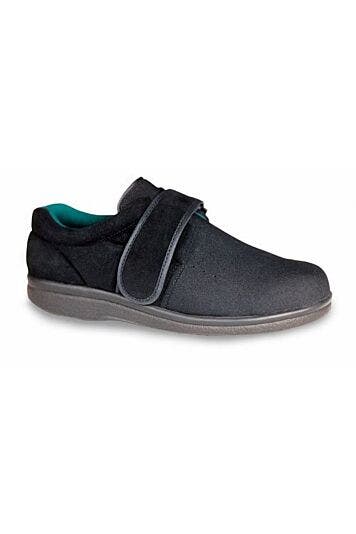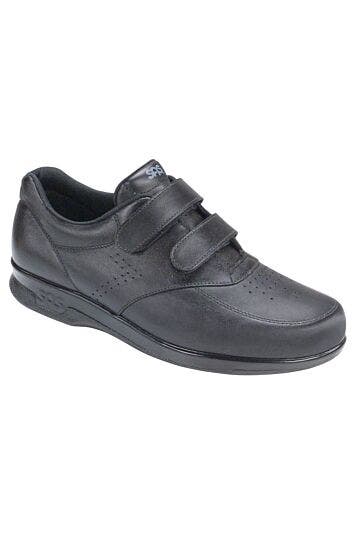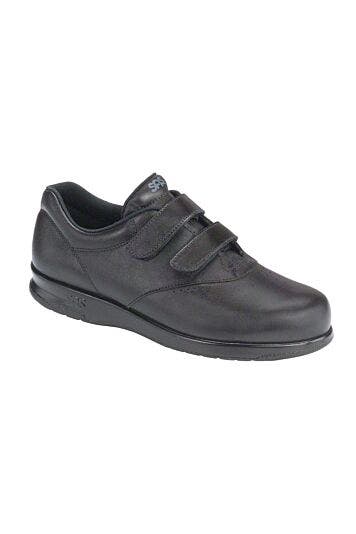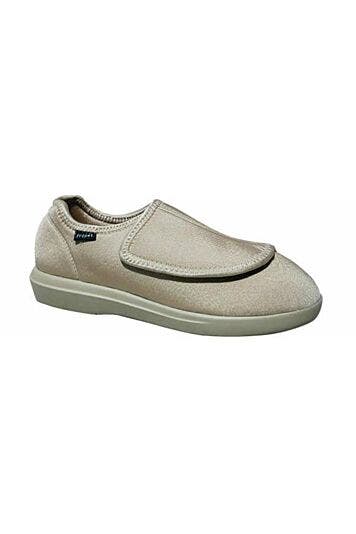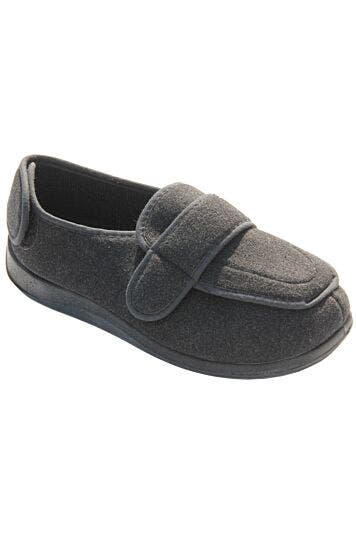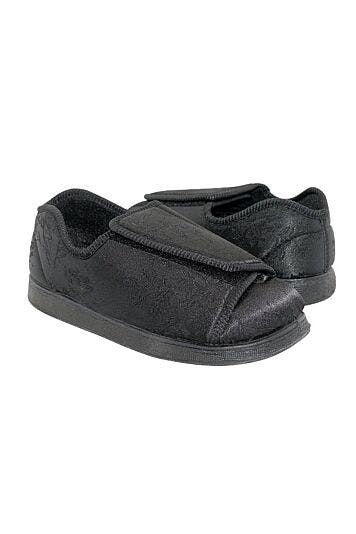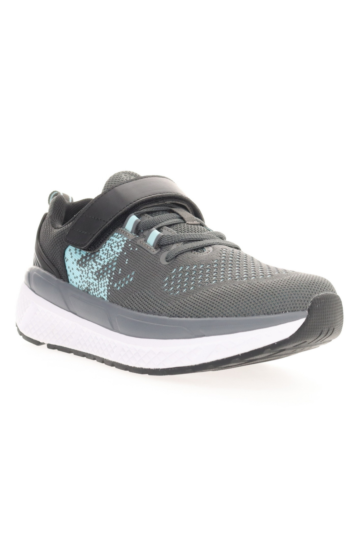The Golden Years: Your Footwear Guide
-
Erica E.
- Health and Wellness
- Jul 23, 2024
- 1047views

As people age, mobility becomes more challenging. The amount of support and cushioning required may change, as might the accommodating features required in their footwear. Footwear that is easy to remove and put on, suddenly becomes a priority. Below are some helpful tips for selecting footwear that may be best for the elderly person in your life you care so much about.

What to look for when selecting footwear
Proper Fit (Length, Width and Depth)
Wide Base of Support: A shoe with a nice, wide outsole has good contact with the ground, which increases stability. Avoid elevated heels that contribute to ankle instability and poor balance.
Good Grip: Outer soles should have a strong, textured rubber sole. Check them periodically for wear and be sure to replace them when the tread is worn! Note* If you have more of a “shuffling” type of gait where you cannot efficiently pick up your feet, look for outsoles that slide more easily on floors and carpet
Firm Midsole: When soles are too flexible, it’s easy to twist a foot or ankle and fall. Look for a sturdy midsole for the best stability.
Light Weight: Heavier shoes can be tiring or difficult to walk in and seniors sometimes drag or shuffle their feet as a result. Look for footwear that offers support without being heavy.
Closed Back: It’s far too easy to stumble out of a shoe’s open heel. Additionally, a closed heel prevents the feet from sliding slightly in the shoes, which can cause problems with balance and stability.
Snug (Not Tight) Fit: Avoid shoes with a loose or floppy design, such as flip-flops or slip-on slippers. Be sure to discard any footwear that has grown stretched or worn out over time.
Velcro Closure: It’s common for older feet to swell during the day. As they do, shoes with laces or velcro can be adjusted to ensure a good fit. Since slip-on shoes can’t be adjusted, they should generally be avoided by seniors. Laces can be harder to manage and are easy to trip over if they come untied, so velcro is usually the best bet. Look for wide Velcro straps for the easiest adjustability.
Upper Materials: Choose footwear made with soft leathers and no seams across the forefoot or shoes made with “stretchy” upper materials as they help prevent possible skin breakdown.
Deep Toe Boxes: Deeper toe boxes allow more room in the forefoot for those with common foot issues that affect the elderly like bunions and hammertoes.
Washable: While not all footwear is washing machine washable, there are shoes and slippers that are. This can be a large benefit to those who may be incontinent that require their footwear to be washed often.
Fall Prevention
Whether it is due to a medical condition or slowed reflexes dues to aging, seniors may not always be able to regain their balance in time if they start to slip or stumble. There are certain things that the elderly can avoid helping prevent slips and falls. These include:
1. Always wear footwear. Avoid walking in stockings or bare feet
2. Avoid shoes with overly soft, floppy midsoles which are easier to trip over
3. Avoid elevated heels and footwear with a narrow base of support
4. Avoid backless slip-on footwear that can fall off your feel while walking
5. Avoid poorly fitted shoes. Shoes that are too large or loose can allow the foot to slide inside the shoe, causing instability and a tripping hazard. Shoes that are too tight can cause painful blisters, corns and calluses.
Evaluate how much support is needed
When selecting footwear, the amount of support, traction and cushioning required can be determined by the mobility and level of activity of the individual. Someone who doesn’t walk but only stands up to transfer from a bed to a wheelchair would not require the same level of support as someone who may spend more of the day walking. Similarly, someone who may be in a wheelchair that uses their feet to propel themselves, would need more support from their footwear than someone who only uses their hands and arms to propel themselves. Consider the level and frequency of the activity and the type of activity when selecting footwear.
Regardless of the type or level of activity, a primary function of footwear is to offer protection to the feet. Protecting your feet from potential harm from bumping into objects whether you’re walking or in a wheelchair, is very important.
Related Posts

